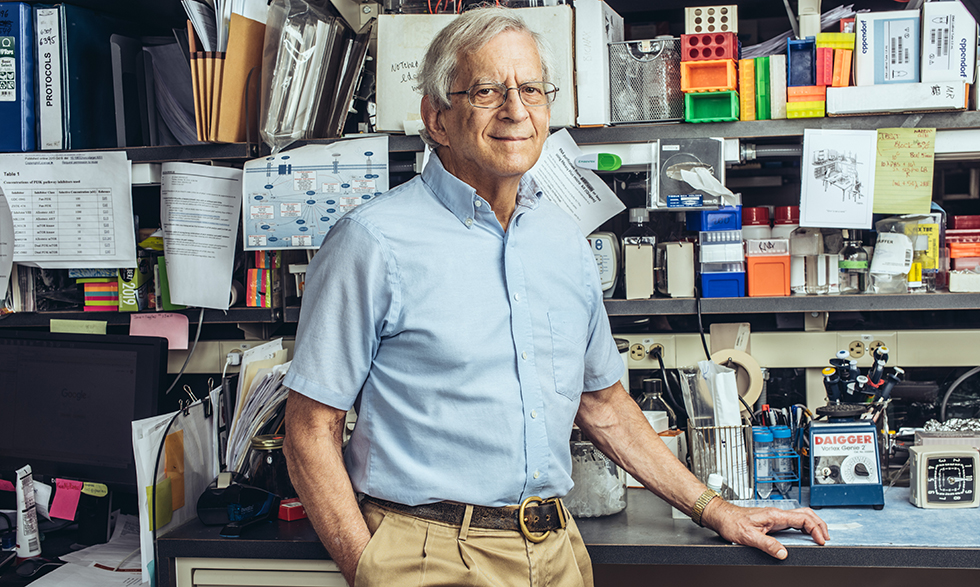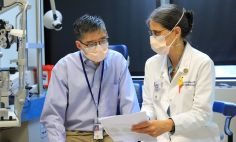How would you describe the mission and focus of NIA?
NIA conducts research to understand the process of aging and uses what we find to optimize quality of life for people as they grow older. We support development of the research workforce across different areas of aging-related science, from molecular to behavioral to social sciences. We also support and provide structures and resources to facilitate research, and then we communicate the results to the research community, policymakers, the public, and others.
Our mission and focus still resonate with the original congressional language from the 1970s, but I would also add that there’s been a growing recognition of the importance of diversity in both our workforce and the older populations we serve.
Alzheimer’s disease and related dementias are a key focus for NIA. What kinds of research does NIA support in these areas?
Alzheimer’s disease and related dementias are a major source of distress and disability―there are currently more than 6 million people living with dementia in this country alone. Much of our work is driven by the need for effective interventions, which we don’t yet have.
But we are also driven by the optimism and hope that comes with the remarkable progress and discoveries that we have made. For example, learning which genetic regions of our DNA are related to Alzheimer’s risk gives us some clues about disease mechanisms that can inform the development of effective interventions. And we’re continuing to learn about the complexity and diversity of factors that contribute to dementia and its symptoms. NIA currently supports over 400 clinical trials on Alzheimer’s and related dementias. About half of these are testing dementia care and caregiving interventions, and the other half are looking at pharmacological and nonpharmacological interventions to treat and prevent these diseases.
But these kinds of advances are only possible with the participation of thousands of people in clinical trials and other studies. To discover which interventions and treatments work best and will ultimately improve quality of life, we need volunteers with and without Alzheimer's disease and related dementias to participate in research trials.
To ensure findings will be relevant for all people, our clinical trials must include participants who reflect the diversity of the U.S. population.
How does NIA research address health disparities across the lifespan?
NIA has always emphasized the importance of addressing unique vulnerabilities of older adult populations, and we’re committed to addressing the needs of other underserved populations―for example, different racial and ethnic groups, different socioeconomic groups, and people who live in rural versus urban settings.
One way we continue to address issues of health disparities during COVID-19 is through our contributions to the RADx® Underserved Populations (RADx-UP) Initiative. This is a cross-NIH collaboration through which we work to ensure that underserved and vulnerable populations have access to COVID-19 testing.
But our entire research domain encompasses important issues around diversity, health disparities, and health equity. For example, in Alzheimer’s disease, there are striking differences in disease outcomes for different populations. Some of our recent research looks at how these differences relate to environmental and social determinants of health as well as genetics. One example of research we’re conducting in this area is the Health and Aging Brain Study - Health Disparities, which is a longitudinal study that looks at the risk of cognitive decline, Alzheimer’s, and related dementias in African American, Mexican American, and non-Hispanic White populations. The Health and Retirement Study (HRS), which has been happening since the early 1990s, is another example; it was carefully designed to include a representative sample of the U.S. population.
What is the HRS? What questions are researchers trying to answer, and what have they found?
The HRS is a highly interdisciplinary, longitudinal study that looks at what happens to people as they transition into retirement. There are more than 20,000 participants over the age of 50, including people from diverse and historically underrepresented populations.
The goal is to tell the story of aging in America by examining intertwined social, environmental, and biological factors and the relationships between them. One of the ways we do this is by studying relationships between life events and experiences and measurable biological outcomes. For example, we have long known that there are associations between stressful life experiences and events (such as experiencing discrimination or losing a job), but whether these stresses cause the poorer health outcomes―or how they do so―has been less clear. A recent HRS study, however found that stress is also associated with changes to a type of white blood cells that are an important part of the immune system process responsible for adapting to new immune challenges. The changes to these cells (called T lymphocytes) are consistent with our immune systems becoming less efficient at meeting certain challenges, which could explain part of the link between stress and health that we have long known about.
Something unique about this project is its commitment to open data sharing―making data accessible and available as soon as possible―from the beginning. This broadens the population of investigators who can come in with new questions and analyze the data to find new answers. HRS has more than 8,000 current registered users and 5,000 papers and publications that cover a wide range of scientific disciplines.
What is geroscience, and why is it important?
Geroscience is a relatively new term. Aging itself is a risk factor for many chronic diseases and conditions―cancer, diabetes, heart disease. Understanding the basic underlying cellular and molecular mechanisms of the aging process itself could allow us to alter the risk of many of these diseases and conditions associated with aging not just one at a time, but altogether. There is literature that identifies the major parameters or dimensions of aging―things like protein stability, stem cell function, and mitochondrial function. Geroscience studies these processes in animals and in humans to track which diseases those processes are each related to. This will give us a better understanding of those relationships so we can begin exploring ways to intervene and improve health outcomes.
What is the Dog Aging Project? What can we learn about healthy aging by studying dogs?
Scientists have learned about the aging process by studying different animals such as worms, mice, and flies. Dogs can help us understand aging in humans because they have great genetic diversity, and they also share homes and other environments with humans. The goal of the Dog Aging Project is to understand how genes, lifestyle, and environment influence aging, and we want to use this information to help dogs and people increase healthspan, which is the period of life spent free from disease.
There’s an observational study with a few thousand participating dogs currently underway. Researchers are gathering information to learn what factors are associated with better health and longer lives. A subset of these dogs will be selected to participate in a new pilot clinical study that looks at the potential of a drug called rapamycin to improve healthspan.
There are lots of dog owners who are excited and enthusiastic about participating in trials that could benefit the dogs as well as the humans. People can learn about the project and nominate their dogs to participate by visiting the Dog Aging Project website.
How do NIA initiatives support diversity, equity, and inclusion in the scientific workforce?
Scientific workforce diversity has been a priority area for NIA for a long time. Issues of diversity, equity, and inclusion are critical to research in basic biology, population health, and behavioral health. We were one of the first institutes to develop a Health Disparities Framework for our research. This framework is the basis for recruiting aging researchers from underrepresented groups for many of the programs we’ve had in place for years. One example is our Resource Centers for Minority Aging Research program, a national network of centers that establishes long-standing relationships with investigators and connects them with promising scientists from underrepresented groups for sustained careers in aging research.
Our Butler-Williams Scholars Program is another long-standing program―more than 30 years―that brings together early-stage professionals from diverse backgrounds who are interested in aging research.
Many graduates of these programs have gone on to become leaders in minority aging. We also have a taskforce on minority research and an Office of Special Populations, and we are about to open a new research building on the NIH campus, the Intramural Center for Alzheimer’s and Related Dementias, which will have a particular focus on workforce recruitment and diversity.
What are some of your favorite things to do when you’re not working?
Spending time with my twin grandsons who are three-and-a-half years old now. There isn’t a dull moment. I’ve always been committed to exercise―I spend a lot of time at the gym―and my grandsons are a great motivation for staying fit as you’re getting older and want to do things like take care of kids!
I also have a vegetable garden; a lot of our produce in the summertime comes from our backyard, although this year wasn’t the best of harvests… at least not yet.







